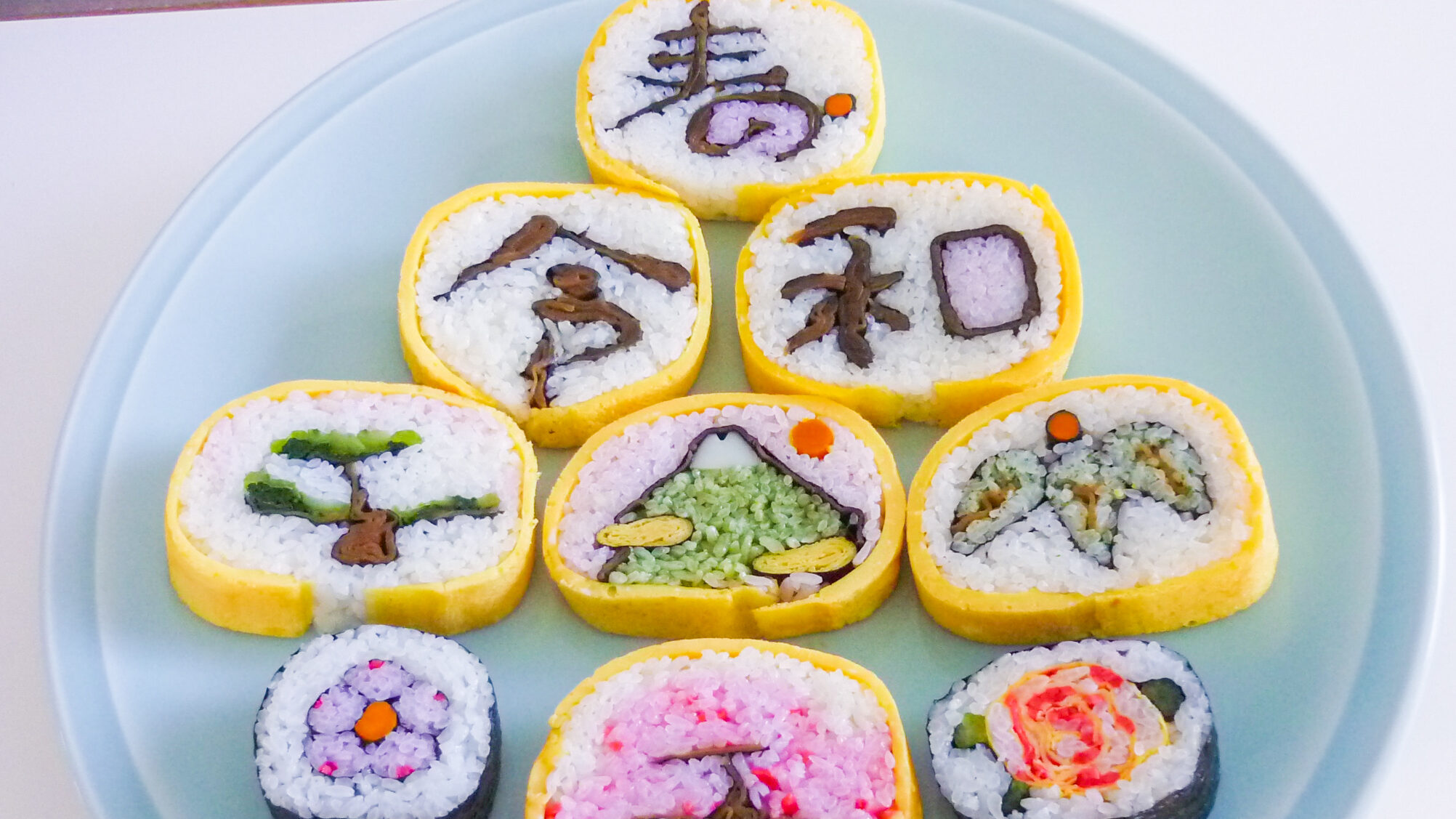
Alright folks, let me tell you about a real treat from Chiba Prefecture: Futomaki Zushi! This isn’t just any sushi; it’s a hearty, colorful roll that’s been a staple at celebrations and gatherings for generations. Think of it as Chiba’s way of bringing a party to your plate! Let’s get rolling!
Dish Name: Futomaki Zushi / 太巻ずし
- Region / Location: Chiba Prefecture, especially the Kazusa and Shimosa regions.
- Primary Area of Tradition: Throughout Chiba Prefecture, particularly the Kazusa and Shimosa areas.
- Main Ingredients: Sushi rice, nori seaweed, egg, kanpyo (dried gourd), green vegetables (pickled), sakura denbu (sweet fish flakes).
How It’s Eaten / Served
The real joy of Futomaki Zushi is in admiring the beautiful pattern when you slice into it. It’s not just about the taste; it’s a feast for the eyes too! You get to enjoy the vibrant colors and the artful arrangement of the ingredients with every bite.
Cultural Background and Preservation
Futomaki Zushi is a type of sushi that’s been passed down through families, especially in farming communities, with its history going way back to the Kansei era (1789-1801). Some folks even say it might have roots in “meharizushi,” a fisherman’s bento from Kishu that followed the sardine shoals! It’s been the star of the show at festivals, Girls’ Day (March 3rd), cherry blossom viewing, and school entrance ceremonies – basically, any event worth celebrating. Back in the day, it was the respected men of the community who made and shared it, but after the war, the women took over, adding their own flair and making it even more gorgeous. You might hear it called “Futomaki Matsuri Zushi,” “Boso Maki,” or “Boso Futomaki Zushi” – it’s got a few nicknames!
Whether it’s the Yabusame festival, seasonal celebrations, prayers for safe childbirth (Koyasu-ko), Ebisu-ko for business prosperity, or “Mushi Okuri” to pray for a good harvest, Futomaki Zushi is the go-to celebratory dish. It’s enjoyed all year round, not just at festivals but also at family events like school entrance ceremonies, sports days, and cherry blossom viewings.
Eiko Ryuzaki, who’s been running the Chiba Traditional Local Cuisine Research Group since the 1960s, has been a real champion for Futomaki Zushi. She’s been actively teaching the different rolling techniques and patterns from all over the Boso area to the younger generation. It’s such a beloved dish that it’s been chosen as one of the “100 Best Hometown Onigiri” and “100 Best Local Dishes from Farming, Mountain, and Fishing Villages.”
Additional information:
- Kanpyo (かんぴょう): Dried gourd strips, often simmered in a sweet and savory sauce, used as a filling in sushi rolls.
- Sakura Denbu (桜でんぶ): Sweet and flaky fish floss, usually pink in color, adding a unique flavor and texture to the sushi.
- Nori (海苔): Dried seaweed sheets, used to wrap the sushi.
- Koyasu-ko (子安講): A gathering of women to pray for safe childbirth, enshrining the deity Koyasu-gami.
- Ebisu-ko (えびす講): A festival held to pray for good business.
- Mushi Okuri (虫送り): A ritual to drive away pests and pray for a bountiful harvest.
- Boso (房総): The name of the peninsula that makes up a large part of Chiba Prefecture.
The information about regional cuisine featured on this website (Piggy's Grandma of Japan) is summarized and adapted from the Ministry of Agriculture, Forestry and Fisheries of Japan (MAFF) website, "Our Regional Cuisines"Additional commentary is provided based on the unique experiences and perspectives of the site's editors.
The copyright for the original content regarding regional cuisine belongs to the Ministry of Agriculture, Forestry and Fisheries of Japan.
The summaries and adaptations published on this site are intended for informational purposes only. Piggy's Grandma of Japan does not guarantee the accuracy or completeness of this information. For the most accurate and complete details, please refer to the original pages on the MAFF website.


